Feedback & sharing
Learn more about which methods of feedback are available and how/when they are used.
Constructive feedback on progress is vital to the effectiveness of portfolios for development and assessment purposes. For this reason, eJournal facilitates many different feedback methods. This article describes:
- Posting comments on activities in the timeline;
- Sharing (parts of) a journal with (external) users;
- Giving feedback to and receiving feedback from peers;
- Navigating the feedback mode.
Comments
Each individual activity in a journal has its own comment section. Comments can be used to communicate extra information about the activity, or to provide feedback. The example below shows a conversation between a teacher and a student, where the teacher is typing a response.
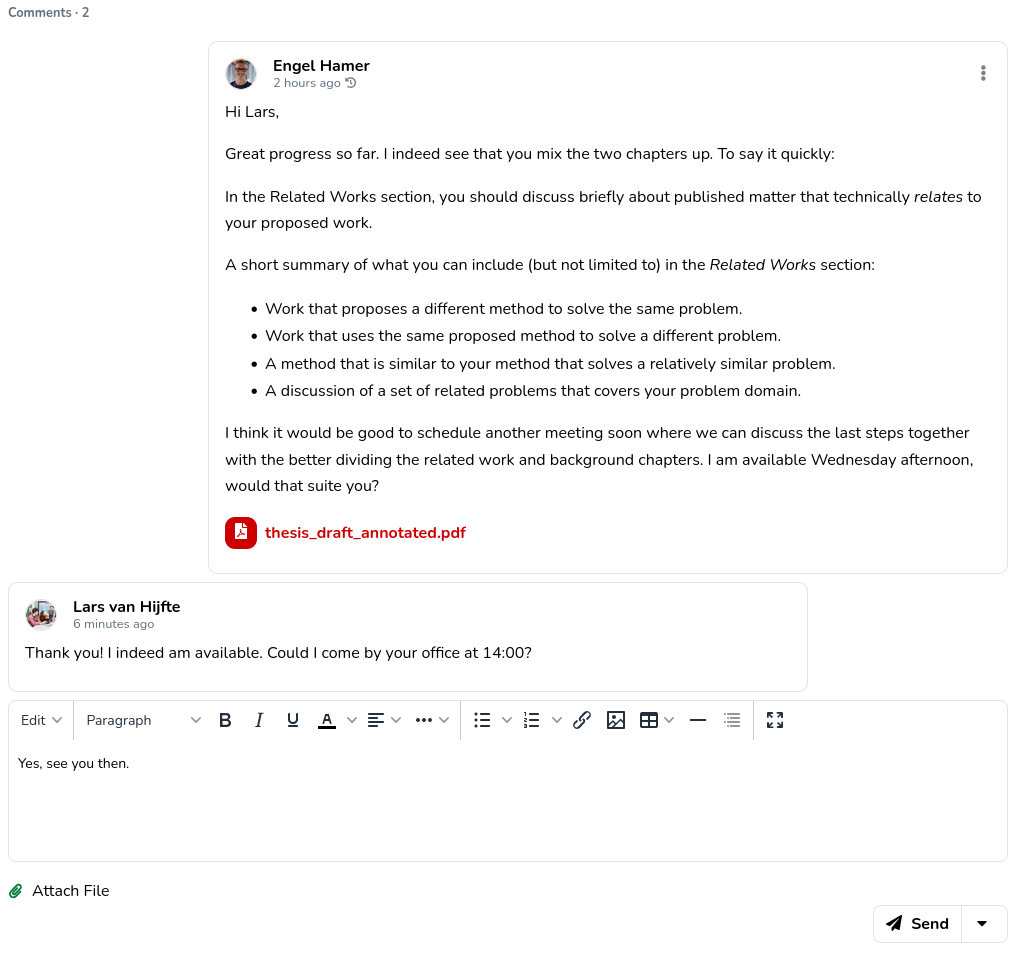
Sharing with (external) users
You can share (parts of) a journal with external users by navigating to the "Sharing & Feedback" tab in the journal page and clicking on the "Share" button. Here you are presented with a screen as shown below. In this screen you can (in order):
- Specify which parts of the journal you would like to share;
- Select the users you would like to share it with. These can be internal and external users;
- Optionally include a rubric or change the permission settings;
- Optionally add a title and message. The title might be useful for yourself to keep better track of the feedback you receive, and the message will be useful for the reviewer to know what you want feedback on.
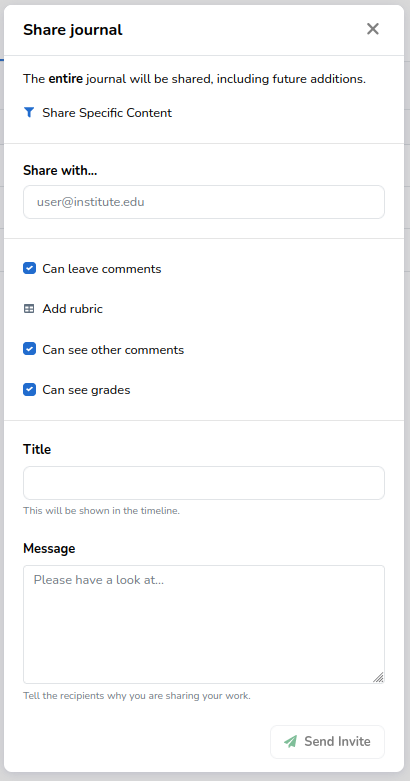
Once you shared the journal, you will see it appear in the list in the "Sharing & Feedback" tab.
Learn more about feedback overview
Peer feedback
Want to configure a peer feedback activity? Follow this guide.
In a peer feedback activity, students are asked to provide feedback on (parts of) journals created by peers. Peer feedback activities will appear in the timeline, and can be recognised by . Selecting a peer feedback activity highlights all related journal content in the timeline.
Each peer feedback activity is consists of three main elements:
Instructions Give(n) feedback Received feedback
Instructions
The instructions tab provides general information such as when the activity takes place, what is expected and how the feedback should be structured, possibly with the help of a rubric.
Give feedback
The give feedback panel provides an overview of all peers that are assigned for review. For each assigned peer it is possible to navigate to their journal (entering the so called feedback mode), see the work that is selected for the peer feedback activity, and leave feedback.
From the give feedback panel it also possible to gain a quick overview of all feedback that was given by a student to all peers they reviewed for the current activity, without having to manually navigate to each individual review.
Received feedback
The received feedback panel provides an overview of all peers that were assigned to review the current journal.
This panel is very similar to the give feedback panel. Tt presents the feedback that was that was given to the student from all peers that reviewed them for the current activity.
Feedback overview

The example above shows that the student has two journals to review. We can see that they gave the following feedback to Maarten:
- One comment on a specific entry;
- A numerical grade using a rubric;
- Overall feedback, indicated by .
The following feedback was given to Engel:
- A numerical grade that does not follow from a rubric;
- Overall feedback.
To get a more in depth view of the given feedback, you can either click on the button to expand it, or click on the row to enter feedback mode. This allows you to browse all feedback that is part of the review, including the full context.
Feedback mode
Giving feedback on (part of) a journal as part of a peer review or feedback request is done in feedback mode. In this mode you are able to do any combination of the following, depending on how the initiator configured the feedback activity:
- Give feedback using the rubric that the initiator configured;
- Add comments below entries submitted for the feedback activity;
- Leave overall feedback, unrelated to a specific entry.
Info
During a feedback activity you might encounter some colourful animal names, such as "Pink Elephant" or "Yellow Fox", to review or as a review author. This means that the feedback activity is configured to take place anonymously.
Overall feedback
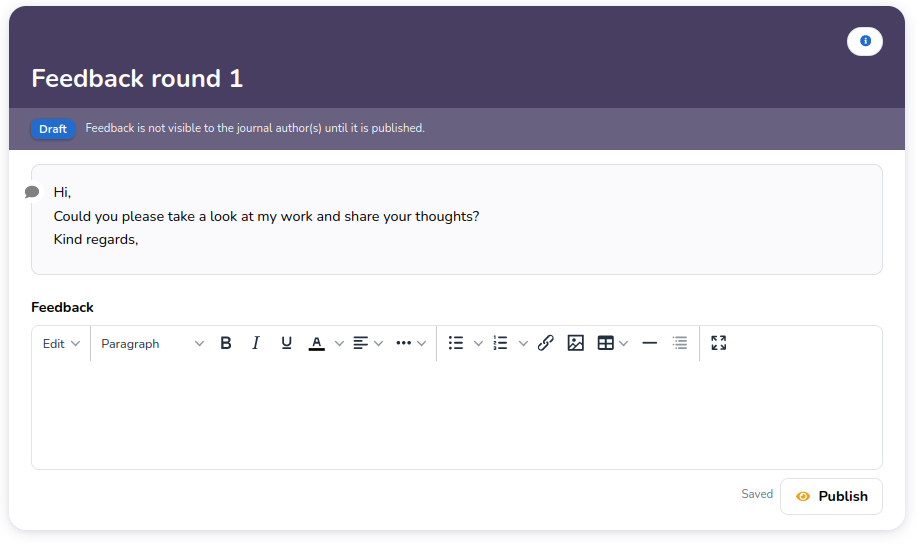
When you enter feedback mode, you will be presented with a feedback form. In this form, you are able to provide numerical and/or overall feedback depending on the configuration. In the example above, the reviewer is able to leave overall feedback. This can be given using the text input field in the middle of the screen upon entering, or via the "open feedback form" button in the top left, which will always be available while navigating the journal.

Numerical feedback making use of a rubric
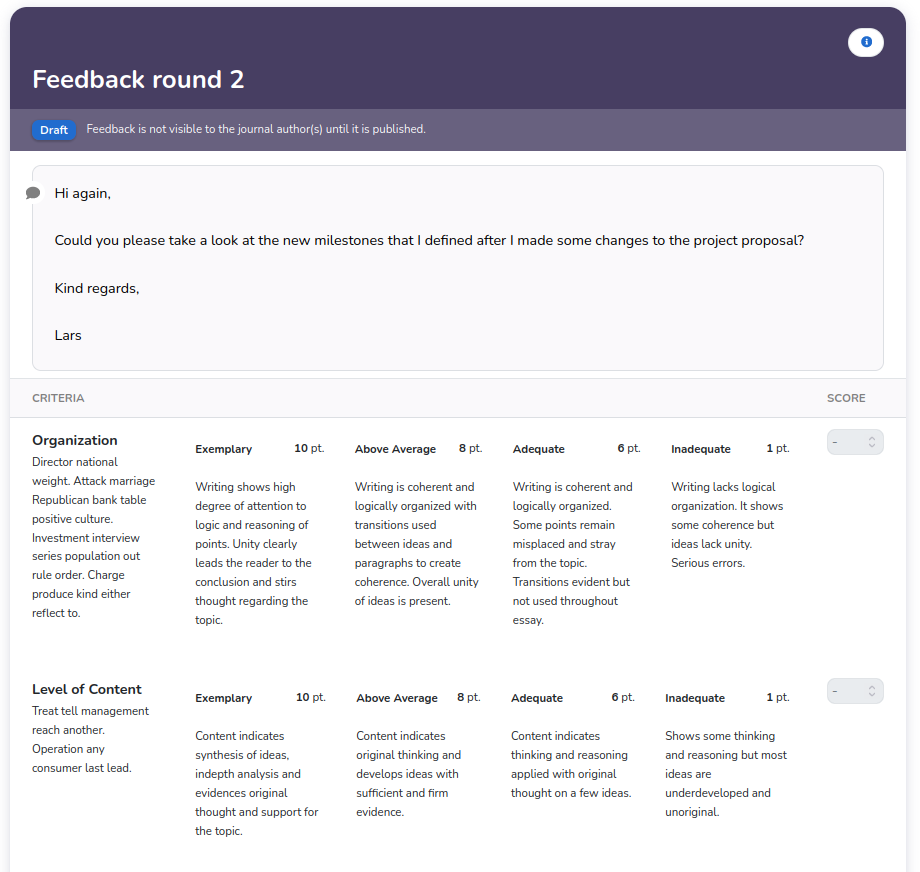
Initiators might ask to make use of a rubric to structure your overall feedback. In the example above you can see that the reviewer is requested to fill in a rubric with the criteria "organization", "level of content", and potentially more below.
Content specific feedback
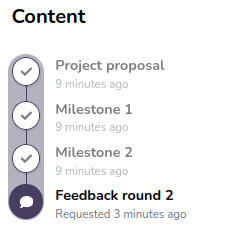
If the initiator selected entries on which feedback should be provided, they will be visible in the timeline on the left hand side. In the example above, you can see that the journal author has shared the project proposal together with two student defined milestones with the reviewer.
Below any of these entries you can leave a comment, which will also be visible in the overview.
Learn more about navigating the timeline
Learn more about posting comments
Publishing feedback
The feedback you provide can start as a draft. Drafts are only visible to the feedback author and teaching staff in a course. This is indicated by the badge in the top left of the screen.

To publish the feedback, navigate to the feedback activity in the timeline and click the "Publish" button at the bottom.
Info
Unpublished feedback is visible for teaching staff and the feedback author, but not for journal authors.